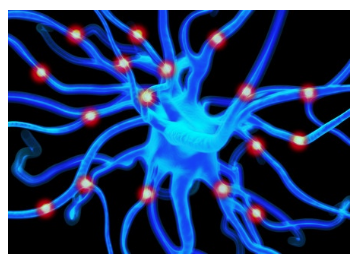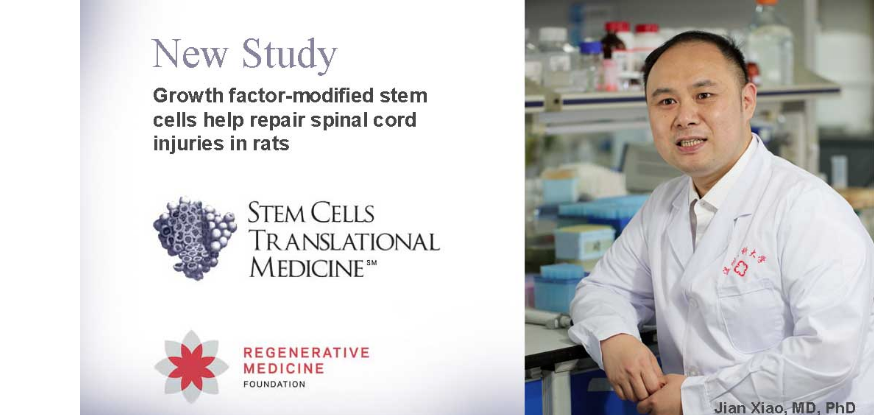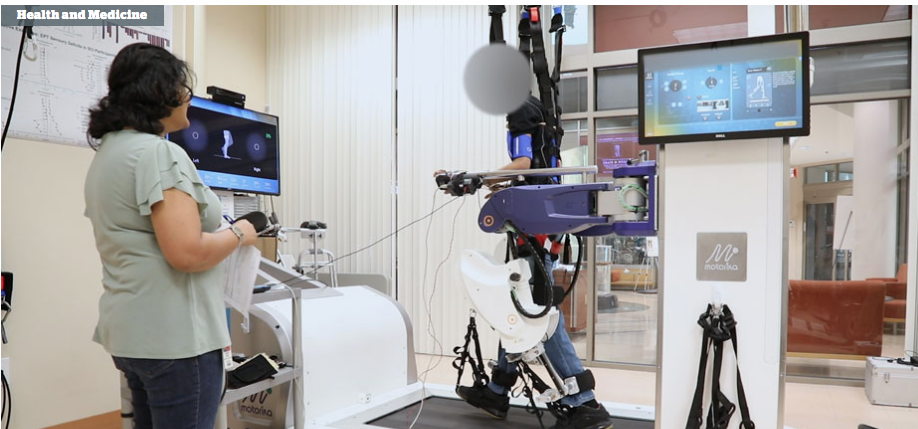Temple scientists regenerate neurons in mice with spinal cord injury and optic nerve damage
30 April 2020
(Philadelphia, PA) - Like power lines in an electrical grid, long wiry projections that grow outward from neurons - structures known as axons - form interconnected communication networks that run from the brain to all parts of the body. But unlike an outage in a power line, which can be fixed, a break in an axon is permanent. Each year thousands of patients confront this reality, facing life-long losses in sensation and motor function from spinal cord injury and related conditions in which axons are badly damaged or severed.
New research by scientists at the Lewis Katz School of Medicine Temple University (LKSOM) shows, however, that gains in functional recovery from these injuries may be possible, thanks to a molecule known as Lin28, which regulates cell growth. In a study published online in the journal Molecular Therapy, the Temple researchers describe the ability of Lin28 - when expressed above its usual levels - to fuel axon regrowth in mice with spinal cord injury or optic nerve injury, enabling repair of the body's communication grid.
Potential for exciting new treatment for spinal cord injury
10 March 2020
New research from the University of Aberdeen has found a new way to repair injured spinal nerves.
Researchers achieved significant regrowth of injured spinal nerves in rats when they activated a specific molecule found in nerve cells.
Dr Wenlong Huang, Dr Derryck Shewan and Dr Alba Guijarro-Belmar from the Institute of Medical Sciences found that activation of a molecule called Epac2 resulted in significant improvement in the regrowth of nerves that had been severed following spinal cord injury.
This is the first time that activation of Epac2 has been found to enhance nerve growth following spinal cord injury.
Growth factor-modified stem cells help repair spinal cord injuries in rats
Bernie Siegel’s WORLD STEM CELL SUMMIT BLOG, News and Opinions
|
| Feb 19, 2020 |
Durham, NC –
A new study released today in STEM CELLS Translational Medicine is the first to illustrate the presence of oxygen-deprived clusters throughout the damaged site of a compressed spinal cord. It is also the first to show how transplanting basic growth factor with the use of a viral vector to target the oxygen-deprived sites enhances the injured spinal cord’s recovery.
The study, conducted on a rat model that the study’s researchers developed just for their investigation, could eventually have great implications for cellular treatment of spinal cord injury (SCI) in humans.
New injection technique may boost spinal cord injury repair efforts
Researchers describe a new method for delivering neural precursor cells to spinal cord injuries in rats, reducing the risk of further injury and boosting the propagation of potentially reparative cells.
Science Daily
January 29, 2020
Source:
University of California - San Diego
Writing in the journal Stem Cells Translational Medicine, an international research team, led by physician-scientists at University of California San Diego School of Medicine, describe a new method for delivering neural precursor cells (NSCs) to spinal cord injuries in rats, reducing the risk of further injury and boosting the propagation of potentially reparative cells.
The findings are published in the Jan. 29, 2020 print issue.
Transforming thoughts to movement offers new hope for spinal cord injury patients
A team of researchers at The Miami Project to Cure Paralysis and the Miller School of Medicine is using a brain-machine interface to help restore function in paralysis patients after spinal cord injury.
U News @The U, November 2019
What if paralyzed limbs could move using only the power of one’s thoughts? Borrowing a story line from the realm of science fiction, a team of researchers at The Miami Project to Cure Paralysis — together with neurosurgeons and biomedical engineers from the University of Miami Miller School of Medicine — are using a brain-machine interface to make this once seemingly impossible feat a reality for people who are living with spinal cord injury (SCI).
Seeking innovative ways to restore function after SCI is one of the central goals of The Miami Project, which was founded in 1985 and has grown to become one of the “crown jewels” of the Miller School and a model for other institutions developing centers for SCI research.
On November 30, 2018, neurosurgeon Dr. Jonathan R. Jagid, associate professor of neurological surgery, and Abhishek Prasad, assistant professor of biomedical engineering, led a surgical procedure as part of an ongoing FDA-approved clinical trial in which an investigational system was implanted on the brain of a research participant.
For ReNetX Bio’s clinical therapy (AXER-204) for the potential treatment of Chronic Spinal Cord Injury (SCI)
01/08/2020 | 09:03am EST
NEW HAVEN, Conn., Jan. 08, 2020 (GLOBE NEWSWIRE) -- ReNetX Bio announced today that the U.S. Food and Drug Administration (FDA) has granted the company Fast Track Designation for ReNetX Bio’s clinical therapy (AXER-204) for the potential treatment of Chronic Spinal Cord Injury (SCI). ReNetX Bio is currently conducting a Phase 1/2 clinical trial “RESET” in patients with SCI, with topline results expected in 2021.
SCI is a serious and currently incurable medical condition which causes profound deficits in function and impairs the ability to carry out activities of daily living (ADLs) and affects roughly 300,000 people in the United States. In addition to profound persistent neurological impairment, patients with chronic SCI suffer a variety of other health consequences including respiratory complications, cardiovascular complications, urinary and bowel complications, spasticity, pain syndromes, pressure ulcers, osteoporosis, and bone fractures.
Treatment for chronic SCI consists primarily of physical and/or occupational therapy. Recovery from SCI after the first few weeks following injury is limited, as axonal growth is virtually non-existent in the adult spinal cord. "This Fast Track Designation from the FDA recognizes the high unmet medical need in patients with SCI," said Erika R. Smith, MBA, CEO of ReNetX Bio. "Fast track designation will help facilitate ReNetX Bio’s development of AXER-204, and potentially expedite future regulatory review of AXER-204 for patients with SCI."




